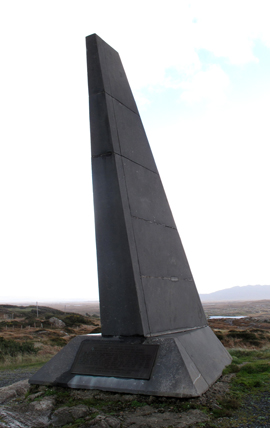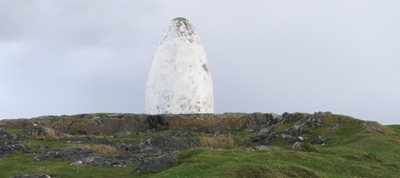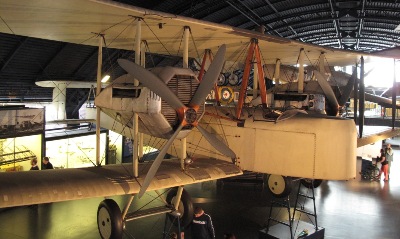First Atlantic Crossing, First Jet Lag
Wednesday, 2 December 2009 In 1919 John Alcock and Arthur Brown made the first flight across the Atlantic. And experienced the first case of jet lag.
In 1919 John Alcock and Arthur Brown made the first flight across the Atlantic. And experienced the first case of jet lag.
◄ In November Maureen and I drove from Galway to Clifden on the west coast of Ireland. Just north of Ballconneely, 4km south of Clifden, we stopped to look at the monument to that historic flight. Then we drove off the road 2km to Derrygimlagh Moor where they landed rather messily in a bog.

▲ Derrygimlagh Moor marker cairn
A remarkable story of dramatic technical progress led to that flight. In 1903 the Wright brothers made the first flight – 100 metres. Jump forward just 6 years and in 1909 Louis Bleriot flies across the English Channel – 37km. Another 10 years and in 1919 an aircraft can fly clear across the Atlantic – over 3000km.
Back in London I went to the Science Museum to see that pioneering aircraft. It’s a big, unwieldly, primitive-looking Vickers Vimy biplane. It took them 16-1/2 hours to fly from St John’s, Newfoundland to that Irish landing, but nobody had ever flown so far, across so many time zones before. So nobody had the opportunity to experience jet lag.

▲ Vickers Vimy in the Science Museum, London
The next day they noted the strange experience we know today as jet lag. Of course there were no jet planes for another quarter century, but they were the first human beings to experience it. ‘Where have you come from,’ they were asked when they landed in Ireland. ‘Yesterday we were in America,’ they replied. Nobody had ever made that claim before either.






